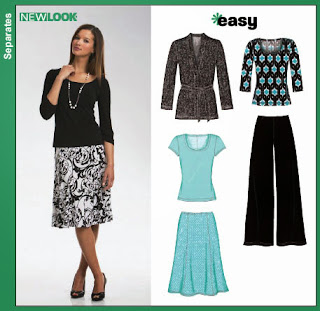My "Little Orchid Dress" - New Look 6643
I've finally finished New Look 6643 - my Little Orchid Dress. It is far from perfect but overall I think I am satisfied with the final result. There are a number of things I would try to do differently if I make this dress again. It is possible I may rip it apart to replace the lining. Or I may just live with it. I think I need to wear it once to see how I really feel about it. Here's the scoop:
I'm guessing a lot of my frustration with the lining came about because I made alterations to the dress, altered the paper pattern to match, cut out the lining, then made more alterations to the dress. So the lining wasn't exactly the same as the dress by the time I went to put them together. I now need to go over my paper pattern and make all final adjustments so that next time (?) I can cut out the dress and the lining in one go. In hindsight I should have gone a size down, at least from below the darts up, the same as I do for my knit tops. I was worried that would be too small but in the end I took in the sides and back the equivalent of a size. That seemed to work really well for the fashion fabric but not so much for the lining. At the end of the day you can't argue with the fact that the lining is too taut for such a close fitting dress. When I look at the pics above I can see that the lining is pulling and doesn't fit quite right.
I thought I was being really good by serging all the edges of the lining pieces because I knew how easily they were going to unravel. This created extra thickness under the binding for the neckline and armseams. With the dress fully lined and edges bound there was no need to finish the fabric edges.
I tried to serge the edges of the seam allowances AFTER assembly. I did it this way because I assumed I would need to make alterations (which I did) and would therefore need to cut off the extra seam allowances anyway. However, it is too difficult to get a neat job after the fact and I am too well aware of the risk I am taking serging with the cutters engaged after the dress is assembled. This was nerve-wracking! To be fair I'm pretty sure I made this decision before deciding to line the dress, so in reality the seams didn't need to be finished after all. It might make sense in the future to serge the seam allowances together as I would on a knit garment if I am not using a lining. I will have to research this idea further to see what if any downsides there are to it.
I more or less followed the pattern instructions for attaching the bindings, even though I have a brand new coverstitch machine sitting right there. After I had done the neckline I went to the dealers to see about getting a binder attachment but the saleswoman felt that it only works for straight edges and outside curves, not inside curves like a neckline. After looking at this example from Debbie Cook at Stitches and Seams, I can see it can be done. Because the binder tool is so expensive, I may try experimenting with my bias tape makers and the coverstitch machine. Another option she suggested is serging the one edge of the binding to the front of the garment, flipping it around to the back as you normally would, but instead of tucking the raw edge under, leave it out and use the coverstitch to "stitch in the ditch" while enclosing the raw edge behind. This may actually be the most attractive finish from the right side (one visible layer of topstitch below the binding) while eliminating one layer of bulk. I was going to try this on the armholes but I thought it would look odd with a different finish there to the neckline.
The other issue I have with the neckline binding is I inserted the zipper too low. I should have let the zipper extend beyond the top of the dress so that the zip would close to the top of the binding, or at least to the bottom of the binding. I lined the top of the zipper tape up with the top of the bodice which means the zip stops a bit below the bottom of the binding. I used a hook-and-eye to try and make it look right but I'm not happy with it. And the missing colour on the zipper pull? That's from using a hemostat to do my zipper up since I'm here by myself. The macro setting on the camera sure does emphasize all the flaws! I guess as long as I wear my hair down no one else will be the wiser to this whole mess ;)
Finally, I do have two positives in all this. I inserted my first ever invisible zipper and it came out perfect! When the zip is closed it looks like a sewn seam. I used the instructions from Sandra Betzina's Power Sewing Step-By-Step. And I have to say that I'm happy with my hem. First I serged my raw edge, then I basted the hem, then I used the basted line to fold back the fabric to sew the blind hem. It came out perfectly straight and the stitches are almost invisible. Go me! :)





Comments
Personally I would lower the neckline so the seam is just above the zipper tab, resew the binding,and put a black hook with a thread bar on the binding.
Really beautiful dress.